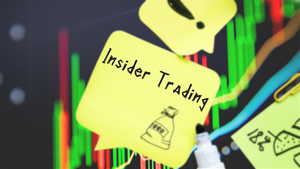
The vibrant pulse of U.S. consumer spending, a long-standing engine of economic growth, is anticipated to weaken considerably through the remainder of 2025 and into 2026. This looming deceleration signals a challenging period for American households, businesses, and policymakers alike. At the heart of this expected slowdown are the compounding effects of an aggressive tariff regime and a pervasive climate of economic uncertainty, which together are creating a formidable headwind against household budgets and purchasing power.
This impending shift is not merely a statistical blip but a significant economic event with profound implications, particularly for lower- and middle-income consumers. As the cost of imported goods escalates due to tariffs and broader economic anxieties prompt caution, these households, already operating on tighter margins, are poised to bear the brunt of rising prices and constrained financial flexibility. The ripple effects are expected to permeate various sectors, redefining consumer behavior and corporate strategies in the coming months.
A Perfect Storm: Tariffs, Uncertainty, and the Spending Slowdown
The U.S. economy is bracing for a notable deceleration in consumer spending, following a resilient but ultimately unsustainable pace earlier in 2025. Projections from leading financial institutions paint a consistent picture of cooling consumption. Morgan Stanley (NYSE: MS) Research, for instance, predicts a slowdown in nominal spending growth to 3.7% in 2025 and a further dip to 2.9% in 2026, a substantial decline from the 5.7% growth observed in 2024. Similarly, EY forecasts real personal consumption expenditures (PCE) to moderate from 2.8% in 2024 to 1.9% in 2025 and 1.4% in 2026. Deloitte (private company) projects real consumer spending to rise by 1.4% in 2025 before a slight acceleration to 1.5% in 2026, with durable goods spending specifically expected to slow or even contract. Moody's (NYSE: MCO) also anticipates a consumption growth slowdown for the rest of 2025, with a shallow and uneven recovery emerging in 2026.
This weakening is primarily attributed to a confluence of factors, with tariffs at the forefront. The average effective U.S. tariff rate has surged to an estimated 18.6% as of August 2025, marking the highest level since 1933. This dramatic increase directly translates into higher import costs, which are overwhelmingly passed on to consumers as elevated prices. The Yale Budget Lab estimates that the 2025 tariffs could lead to an average price increase of 1.8% by the end of the year, effectively equating to an average income loss of $2,400 per American household, with other analyses suggesting an annual loss of up to $3,800. While some initial "hasty purchases" may have occurred in anticipation of these higher tariffs, this "front-loading" of demand is expected to dissipate, intensifying the negative impact on discretionary spending in the latter half of 2025.
A flurry of specific tariff actions in 2025 has contributed to this escalating burden. Steel and aluminum imports now face a 50% tariff for most countries, up from 25%, while a 125% tariff on goods from China, Hong Kong, and Macau (replacing an 84% rate) has briefly been reduced to 10% until November. A new, broad 10% tariff on all imported goods, with exemptions for Canada and Mexico, became effective in April 2025, representing the most widespread tariff increase since the 1930s. Additionally, 25% tariffs on all imported automobile parts, 50% tariffs on semi-finished copper products, and a 50% baseline tariff on all goods from India have been implemented or are set to take effect. The suspension of the "de minimis" exemption for shipments valued at $800 or less means virtually all imports are now subject to duties, further broadening the impact.
Beyond tariffs, a mosaic of broader economic uncertainties is dampening consumer confidence and spending. A cooling labor market, characterized by moderating wage growth and slowing hiring, is making consumers more cautious. Persistent inflationary pressures, particularly from Owners' Equivalent Rent (OER), are expected to keep U.S. inflation above target, projected to average 2.9% in 2025 and accelerate to 3.2% in 2026 due to tariffs. Elevated interest rates from the Federal Reserve, likely to remain steady until March 2026, continue to restrain big-ticket purchases and housing activity. Furthermore, a significant decline in consumer sentiment, as measured by the University of Michigan and the Conference Board, coupled with rising consumer credit delinquency rates, underscores the growing financial strain and uncertainty felt by American households.
Navigating the Headwinds: Who Wins and Who Loses?
The anticipated slowdown in consumer spending, driven by tariffs and economic uncertainty, will undoubtedly create a distinct landscape of winners and losers across various sectors and among different consumer groups. The regressive nature of tariffs means their impact will be felt most acutely by lower- and middle-income consumers, who allocate a larger proportion of their earnings to essential goods like food, clothing, and household appliances. These are often imported items, and their increased cost due to duties will severely strain already tight budgets. The Penn Wharton Budget Model estimates that prolonged tariffs could lead to a staggering $22,000 lifetime loss for middle-income households by 2030 and price hikes of 40-44% in apparel and footwear for lower-income households. This group will be forced to cut discretionary spending and seek out value brands, leading to a significant contraction in their purchasing power.
Consequently, retailers specializing in discretionary goods, such as electronics, fashion apparel (beyond essential items), and luxury items, are likely to face substantial headwinds. Companies operating with thin margins and heavily reliant on global supply chains for their products will also be particularly vulnerable. Industries such as automotive, manufacturing, industrial goods, pharmaceuticals, and high-tech electronics, which depend heavily on imported components or finished goods, will see their input costs rise, potentially eroding profitability or forcing them to increase prices further, thereby dampening demand. Major retailers like Walmart (NYSE: WMT) and Target (NYSE: TGT), despite their scale, could face pressure on their margins as they try to absorb some costs or navigate consumer shifts towards cheaper alternatives.
Conversely, some entities may find themselves in a relatively stronger position, or at least less impacted, by this economic shift. Domestic producers who are less reliant on imported raw materials or components could see a competitive advantage as imported goods become more expensive. This could particularly benefit manufacturers of essential goods or those with robust U.S.-based supply chains. Value retailers and discount brands, already catering to budget-conscious consumers, may experience an uptick in demand as households trade down to more affordable options. Companies with strong pricing power and highly differentiated products might also be better equipped to pass on increased costs without significant loss of market share. Technology firms providing essential services or software, which are less exposed to physical import costs, could also prove more resilient.
The financial sector, while generally affected by economic slowdowns, might see mixed results. Banks with significant exposure to consumer credit could face higher delinquency rates, but those focused on corporate lending to companies benefiting from domestic production could see some opportunities. For investors, the landscape necessitates a shift towards defensive stocks and companies with stable cash flows, strong balance sheets, and minimal reliance on import-heavy supply chains or discretionary consumer spending.
Industry Shifts and Broader Economic Implications
The cooling of consumer spending, amplified by tariffs and economic uncertainty, is poised to instigate significant shifts across various industries and carry broader implications for the U.S. and global economies. One of the most prominent trends emerging from this environment is a renewed emphasis on supply chain resilience and localization. Companies, burnt by past disruptions and now facing escalating import costs, will likely accelerate efforts to diversify their supply chains, near-shore production, or even fully re-shore manufacturing operations. This strategic pivot could lead to increased domestic investment in manufacturing and logistics, potentially creating new jobs in specific sectors, though perhaps at a higher cost for consumers initially.
The ripple effects of these developments will be far-reaching. Logistics and shipping companies, for instance, will need to adapt to changing trade flows and potentially reduced volumes of international freight. Industries that have historically relied on efficient global supply chains to maintain competitive pricing, such as apparel, footwear, and consumer electronics, will face intense pressure to innovate or reconfigure their operations. This could lead to a more fragmented global trade landscape, with countries focusing more on regional trade blocs and bilateral agreements rather than broad multilateral free trade.
From a regulatory and policy standpoint, the escalating tariff regime is likely to generate increased scrutiny and debate. Policymakers will face pressure to assess the effectiveness and economic consequences of these tariffs, particularly as they contribute to domestic inflation and disproportionately affect lower-income households. This could lead to calls for adjustments, exemptions, or even a re-evaluation of overall trade policy. Furthermore, a slowdown in consumer spending, coupled with potential business contraction, could impact government tax revenues, creating new fiscal challenges and potentially influencing future spending priorities or stimulus measures.
Historically, periods of significant tariff increases, such as the Smoot-Hawley Act of 1930, have often been associated with severe economic downturns and a contraction of global trade. While the current situation has distinct characteristics, the sharp increase in the effective U.S. tariff rate to levels not seen since the 1930s serves as a cautionary historical precedent. These measures, combined with a persistent inflationary environment and high interest rates, create a complex and potentially perilous economic scenario that demands careful monitoring and strategic responses from all stakeholders.
What Comes Next: Adapt or Stagnate
The immediate future points towards a continued slowdown in consumer spending, particularly in the discretionary categories, as households adjust to higher prices and economic uncertainties. In the short term, businesses, especially those in consumer-facing sectors, will likely experience increased pressure on their earnings. Companies might attempt to absorb some of the tariff-induced cost increases to maintain market share, leading to margin compression. This will necessitate a heightened focus on cost control, operational efficiency, and potentially a re-evaluation of product portfolios to prioritize essential or value-oriented offerings.
Looking further ahead, the long-term landscape could see more permanent structural shifts in global supply chains. The drive towards diversification, near-shoring, and reshoring is likely to accelerate, leading to increased capital investment in domestic manufacturing capabilities. This could reshape regional economies and create new opportunities for specialized labor. The Federal Reserve will continue to walk a tightrope, balancing inflationary pressures with the need to avoid a severe economic contraction. Any shifts in monetary policy, such as interest rate adjustments, will be closely watched for their potential impact on consumer credit and investment.
Strategic pivots will be crucial for companies seeking to navigate this challenging environment. This includes exploring alternative, tariff-free sourcing options, investing in automation to reduce labor costs, and innovating to deliver products at lower price points without sacrificing quality. Furthermore, businesses may increasingly focus on domestic market opportunities, tailoring products and marketing strategies to resonate with a more budget-conscious local consumer base. Those that can effectively adapt their supply chains, pricing strategies, and product offerings to meet the evolving demands of a constrained consumer market will be best positioned for resilience.
Potential scenarios for the coming months range from a "soft landing," where the slowdown is managed without tipping into a full-blown recession, to a more significant economic downturn if global trade tensions escalate further or domestic economic uncertainties deepen. Market opportunities may emerge for agile companies that can offer innovative solutions for cost reduction or value creation for consumers. Conversely, businesses with rigid supply chains, high fixed costs, or heavy reliance on imports and discretionary spending face substantial challenges. Investors should prepare for continued volatility and seek out companies demonstrating robust adaptability and financial prudence.
Conclusion: A New Era of Prudent Consumption
The convergence of escalating tariffs and pervasive economic uncertainty marks the beginning of a new era for U.S. consumer spending – one characterized by prudence, caution, and a fundamental reassessment of purchasing habits. The expected weakening of household expenditures through 2025 and 2026 is not merely a cyclical fluctuation but a structural shift influenced by policies designed to reshape global trade. The disproportionate impact on lower- and middle-income households underscores the regressive nature of these tariffs, highlighting a growing economic divide that warrants close attention from policymakers and social programs.
Moving forward, the market will likely be defined by cautious consumer behavior, with a heightened focus on essential goods and value-driven purchases. Businesses will need to demonstrate exceptional agility in adapting their supply chains, pricing strategies, and product offerings to meet these evolving demands. Companies that successfully navigate the twin challenges of rising input costs and constrained consumer budgets, potentially by localizing production or offering more affordable alternatives, will be the ones that thrive in this environment.
Investors, in turn, should exercise vigilance, closely monitoring key economic indicators such as inflation rates, consumer confidence surveys, and the Federal Reserve's monetary policy decisions. Particular attention should be paid to company earnings reports and forward-looking guidance from retailers, manufacturers, and logistics providers for insights into the real-world impact of these trends. The coming months will test the resilience of the U.S. economy, necessitating strategic foresight and adaptive measures from all participants to weather this period of economic recalibration and emerge stronger on the other side.






